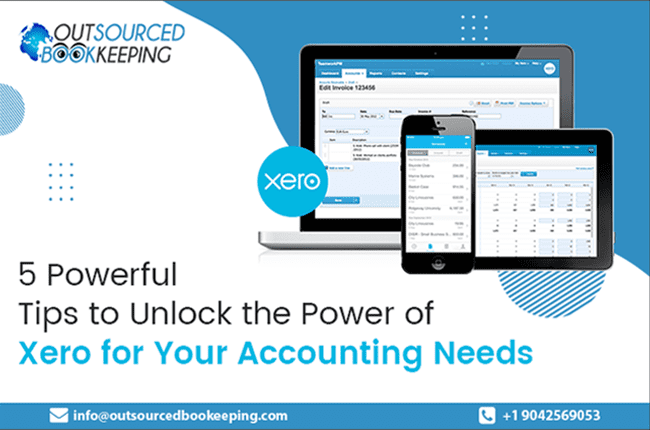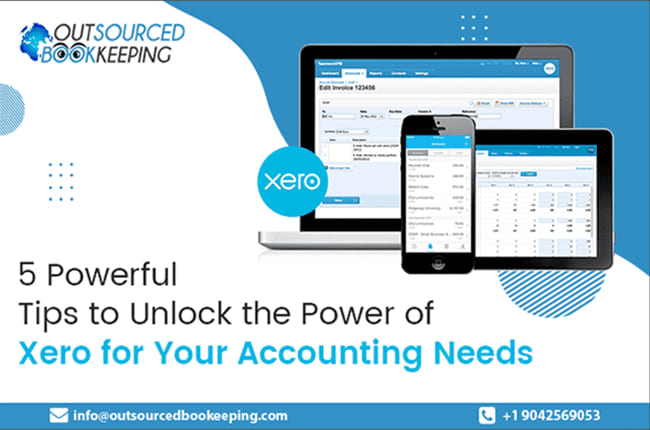Using Xero accounting software to its full potential requires more than just expertise, it involves utilizing a technology that is redefining accounting. Discover five efficient strategies in this guide that may assist you in getting the most out of Xero for your accounting needs.
These suggestions are designed to advance your accounting skills, regardless of whether you’re looking to improve financial management efficiency, explore smart reporting, or streamline procedures.

Centralize Document Storage: Businesses need to store papers efficiently, and Xero offers a platform for centralizing and managing important financial information. With the help of this function, users may safely save a variety of documents inside the system, guaranteeing quick accessibility and organization. Documents like as contracts, invoices, receipts, bills, and financial statements may all be uploaded and managed straight into Xero’s document storage hub.
By centralizing documents in Xero automation, you may retrieve documents more quickly and easily without having to look through many digital or physical storage systems. By streamlining the procedure, this consolidation helps save time that may be used for customer queries, tax preparation, and audits.
Additionally, by keeping all of the documentation in one place, team members, accountants, and clients can collaborate and communicate better and always have access to the most recent information.
Optimize Inventory Tracking: Businesses can effectively manage stock levels and track inventory movements with Xero’s inventory tracking function. It provides capabilities for managing purchases, keeping track of inventory amounts, and establishing a smooth flow of data about inventory. Items having certain properties, such as numbers, categories, or price tiers, can be set up by users.
Maintaining precise stock levels and avoiding overstocking or stockouts are made possible by optimizing inventory monitoring in Xero. By offering information on top-selling products, low-moving inventory, and reorder points, it facilitates well-informed decision-making.
Through the automation of buy orders based on preset inventory criteria, this functionality also aids in expediting the procurement process. Businesses may maximize cash flow, save storage costs, and boost overall operational efficiency by having an exhaustive overview of their inventory circumstance.
Generate Custom Reports: Users of Xero may design personalized reports that are suited to their unique company requirements. To create reports that capture crucial financial measures, performance indicators, or industry-specific insights, it provides a variety of reporting templates and customization possibilities for outsourcing services. Businesses may monitor budget deviations, cash flow predictions, profitability ratios, and key performance indicators (KPIs) using custom reports in Xero.
With the help of this function, one may conduct an in-depth study and make well-informed judgments based on current, pertinent facts. Custom reports, which offer a thorough summary of the company’s financial health and development trajectory, are also very helpful in explaining financial performance to internal teams, investors, and stakeholders.
Dashboard Customization: Through the dashboard customization tool in Xero online accounting, customers may tailor the UI to their own tastes and company needs. The dashboard functions as a single portal that presents important financial data in an easy-to-understand style. Users may customize the dashboard to display the most relevant data and insights by using the customization settings.
The dashboard may be tailored to make the experience more user-friendly and effective. The presentation of important metrics may be prioritized, panels can be added or removed, and widgets can be rearranged. For example, an accountant could prioritize sales performance and expense summaries, but a business owner might prefer a summary of outstanding bills, cash flow patterns, or bank balances.
Expense Tracking Categories: Xero’s expense tracking categories function makes it possible to carefully classify and arrange business spending. Users can create custom expense categories to accurately classify different types of expenses, enabling comprehensive expense management and reporting. Companies can gain a comprehensive insight into their spending patterns by establishing discrete categories for their expenditures.
This allows for improved cost analysis, budget allocation, and expenditure control. Expenses could be broken down into several categories, including travel, utilities, office supplies, or marketing costs, to provide a clearer picture of how money is being spent. Accurate spending monitoring categories can help generate precise financial reporting and budget forecasts.
With Outsourced Bookkeeping, explore the many options bookkeeping with Xero provides for your accounting needs. To improve your financial administration, make use of the advantages of centralizing document storage, streamlining inventory monitoring, and creating personalized reports.
The skill of Outsourced Bookkeeping is in utilizing Xero to its finest extent so that these features may be seamlessly integrated to optimize accounting procedures. Discover a world of effective categories for tracking expenses and dashboards that you may customize to promote business expansion and financial success. Use Outsourced Bookkeeping to improve your accounting experience right now.









